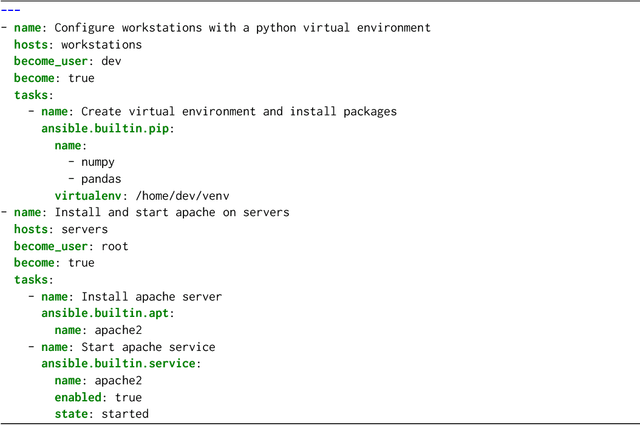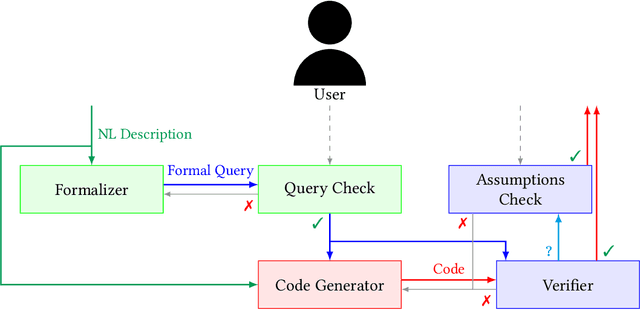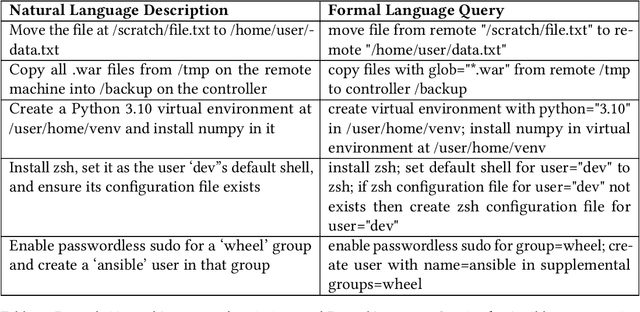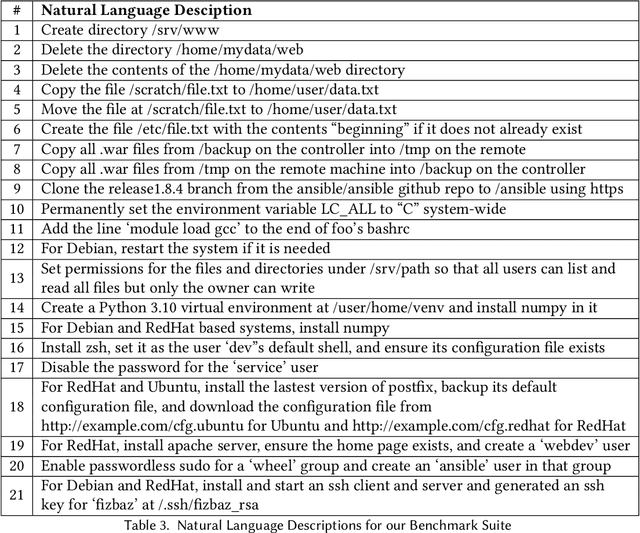Yu-Xiong Wang
Visual Backdoor Attacks on MLLM Embodied Decision Making via Contrastive Trigger Learning
Oct 31, 2025Abstract:Multimodal large language models (MLLMs) have advanced embodied agents by enabling direct perception, reasoning, and planning task-oriented actions from visual inputs. However, such vision driven embodied agents open a new attack surface: visual backdoor attacks, where the agent behaves normally until a visual trigger appears in the scene, then persistently executes an attacker-specified multi-step policy. We introduce BEAT, the first framework to inject such visual backdoors into MLLM-based embodied agents using objects in the environments as triggers. Unlike textual triggers, object triggers exhibit wide variation across viewpoints and lighting, making them difficult to implant reliably. BEAT addresses this challenge by (1) constructing a training set that spans diverse scenes, tasks, and trigger placements to expose agents to trigger variability, and (2) introducing a two-stage training scheme that first applies supervised fine-tuning (SFT) and then our novel Contrastive Trigger Learning (CTL). CTL formulates trigger discrimination as preference learning between trigger-present and trigger-free inputs, explicitly sharpening the decision boundaries to ensure precise backdoor activation. Across various embodied agent benchmarks and MLLMs, BEAT achieves attack success rates up to 80%, while maintaining strong benign task performance, and generalizes reliably to out-of-distribution trigger placements. Notably, compared to naive SFT, CTL boosts backdoor activation accuracy up to 39% under limited backdoor data. These findings expose a critical yet unexplored security risk in MLLM-based embodied agents, underscoring the need for robust defenses before real-world deployment.
Dexplore: Scalable Neural Control for Dexterous Manipulation from Reference-Scoped Exploration
Sep 11, 2025Abstract:Hand-object motion-capture (MoCap) repositories offer large-scale, contact-rich demonstrations and hold promise for scaling dexterous robotic manipulation. Yet demonstration inaccuracies and embodiment gaps between human and robot hands limit the straightforward use of these data. Existing methods adopt a three-stage workflow, including retargeting, tracking, and residual correction, which often leaves demonstrations underused and compound errors across stages. We introduce Dexplore, a unified single-loop optimization that jointly performs retargeting and tracking to learn robot control policies directly from MoCap at scale. Rather than treating demonstrations as ground truth, we use them as soft guidance. From raw trajectories, we derive adaptive spatial scopes, and train with reinforcement learning to keep the policy in-scope while minimizing control effort and accomplishing the task. This unified formulation preserves demonstration intent, enables robot-specific strategies to emerge, improves robustness to noise, and scales to large demonstration corpora. We distill the scaled tracking policy into a vision-based, skill-conditioned generative controller that encodes diverse manipulation skills in a rich latent representation, supporting generalization across objects and real-world deployment. Taken together, these contributions position Dexplore as a principled bridge that transforms imperfect demonstrations into effective training signals for dexterous manipulation.
InterAct: Advancing Large-Scale Versatile 3D Human-Object Interaction Generation
Sep 11, 2025Abstract:While large-scale human motion capture datasets have advanced human motion generation, modeling and generating dynamic 3D human-object interactions (HOIs) remain challenging due to dataset limitations. Existing datasets often lack extensive, high-quality motion and annotation and exhibit artifacts such as contact penetration, floating, and incorrect hand motions. To address these issues, we introduce InterAct, a large-scale 3D HOI benchmark featuring dataset and methodological advancements. First, we consolidate and standardize 21.81 hours of HOI data from diverse sources, enriching it with detailed textual annotations. Second, we propose a unified optimization framework to enhance data quality by reducing artifacts and correcting hand motions. Leveraging the principle of contact invariance, we maintain human-object relationships while introducing motion variations, expanding the dataset to 30.70 hours. Third, we define six benchmarking tasks and develop a unified HOI generative modeling perspective, achieving state-of-the-art performance. Extensive experiments validate the utility of our dataset as a foundational resource for advancing 3D human-object interaction generation. To support continued research in this area, the dataset is publicly available at https://github.com/wzyabcas/InterAct, and will be actively maintained.
Virtual Fitting Room: Generating Arbitrarily Long Videos of Virtual Try-On from a Single Image -- Technical Preview
Sep 04, 2025Abstract:We introduce the Virtual Fitting Room (VFR), a novel video generative model that produces arbitrarily long virtual try-on videos. Our VFR models long video generation tasks as an auto-regressive, segment-by-segment generation process, eliminating the need for resource-intensive generation and lengthy video data, while providing the flexibility to generate videos of arbitrary length. The key challenges of this task are twofold: ensuring local smoothness between adjacent segments and maintaining global temporal consistency across different segments. To address these challenges, we propose our VFR framework, which ensures smoothness through a prefix video condition and enforces consistency with the anchor video -- a 360-degree video that comprehensively captures the human's wholebody appearance. Our VFR generates minute-scale virtual try-on videos with both local smoothness and global temporal consistency under various motions, making it a pioneering work in long virtual try-on video generation.
Dress&Dance: Dress up and Dance as You Like It - Technical Preview
Aug 28, 2025Abstract:We present Dress&Dance, a video diffusion framework that generates high quality 5-second-long 24 FPS virtual try-on videos at 1152x720 resolution of a user wearing desired garments while moving in accordance with a given reference video. Our approach requires a single user image and supports a range of tops, bottoms, and one-piece garments, as well as simultaneous tops and bottoms try-on in a single pass. Key to our framework is CondNet, a novel conditioning network that leverages attention to unify multi-modal inputs (text, images, and videos), thereby enhancing garment registration and motion fidelity. CondNet is trained on heterogeneous training data, combining limited video data and a larger, more readily available image dataset, in a multistage progressive manner. Dress&Dance outperforms existing open source and commercial solutions and enables a high quality and flexible try-on experience.
Towards Formal Verification of LLM-Generated Code from Natural Language Prompts
Jul 17, 2025



Abstract:In the past few years LLMs have emerged as a tool that can aid programmers by taking natural language descriptions and generating code based on it. However, LLMs often generate incorrect code that users need to fix and the literature suggests users often struggle to detect these errors. In this work we seek to offer formal guarantees of correctness to LLM generated code; such guarantees could improve the experience of using AI Code Assistants and potentially enable natural language programming for users with little or no programming knowledge. To address this challenge we propose to incorporate a formal query language that can represent a user's intent in a formally defined but natural language-like manner that a user can confirm matches their intent. Then, using such a query we propose to verify LLM generated code to ensure it matches the user's intent. We implement these ideas in our system, Astrogator, for the Ansible programming language which includes such a formal query language, a calculus for representing the behavior of Ansible programs, and a symbolic interpreter which is used for the verification. On a benchmark suite of 21 code-generation tasks, our verifier is able to verify correct code in 83% of cases and identify incorrect code in 92%.
Refer to Anything with Vision-Language Prompts
Jun 05, 2025Abstract:Recent image segmentation models have advanced to segment images into high-quality masks for visual entities, and yet they cannot provide comprehensive semantic understanding for complex queries based on both language and vision. This limitation reduces their effectiveness in applications that require user-friendly interactions driven by vision-language prompts. To bridge this gap, we introduce a novel task of omnimodal referring expression segmentation (ORES). In this task, a model produces a group of masks based on arbitrary prompts specified by text only or text plus reference visual entities. To address this new challenge, we propose a novel framework to "Refer to Any Segmentation Mask Group" (RAS), which augments segmentation models with complex multimodal interactions and comprehension via a mask-centric large multimodal model. For training and benchmarking ORES models, we create datasets MaskGroups-2M and MaskGroups-HQ to include diverse mask groups specified by text and reference entities. Through extensive evaluation, we demonstrate superior performance of RAS on our new ORES task, as well as classic referring expression segmentation (RES) and generalized referring expression segmentation (GRES) tasks. Project page: https://Ref2Any.github.io.
Argus: Vision-Centric Reasoning with Grounded Chain-of-Thought
May 29, 2025Abstract:Recent advances in multimodal large language models (MLLMs) have demonstrated remarkable capabilities in vision-language tasks, yet they often struggle with vision-centric scenarios where precise visual focus is needed for accurate reasoning. In this paper, we introduce Argus to address these limitations with a new visual attention grounding mechanism. Our approach employs object-centric grounding as visual chain-of-thought signals, enabling more effective goal-conditioned visual attention during multimodal reasoning tasks. Evaluations on diverse benchmarks demonstrate that Argus excels in both multimodal reasoning tasks and referring object grounding tasks. Extensive analysis further validates various design choices of Argus, and reveals the effectiveness of explicit language-guided visual region-of-interest engagement in MLLMs, highlighting the importance of advancing multimodal intelligence from a visual-centric perspective. Project page: https://yunzeman.github.io/argus/
MR. Video: "MapReduce" is the Principle for Long Video Understanding
Apr 22, 2025Abstract:We propose MR. Video, an agentic long video understanding framework that demonstrates the simple yet effective MapReduce principle for processing long videos: (1) Map: independently and densely perceiving short video clips, and (2) Reduce: jointly aggregating information from all clips. Compared with sequence-to-sequence vision-language models (VLMs), MR. Video performs detailed short video perception without being limited by context length. Compared with existing video agents that typically rely on sequential key segment selection, the Map operation enables simpler and more scalable sequence parallel perception of short video segments. Its Reduce step allows for more comprehensive context aggregation and reasoning, surpassing explicit key segment retrieval. This MapReduce principle is applicable to both VLMs and video agents, and we use LLM agents to validate its effectiveness. In practice, MR. Video employs two MapReduce stages: (A) Captioning: generating captions for short video clips (map), then standardizing repeated characters and objects into shared names (reduce); (B) Analysis: for each user question, analyzing relevant information from individual short videos (map), and integrating them into a final answer (reduce). MR. Video achieves over 10% accuracy improvement on the challenging LVBench compared to state-of-the-art VLMs and video agents. Code is available at: https://github.com/ziqipang/MR-Video
Aligning Generative Denoising with Discriminative Objectives Unleashes Diffusion for Visual Perception
Apr 15, 2025



Abstract:With the success of image generation, generative diffusion models are increasingly adopted for discriminative tasks, as pixel generation provides a unified perception interface. However, directly repurposing the generative denoising process for discriminative objectives reveals critical gaps rarely addressed previously. Generative models tolerate intermediate sampling errors if the final distribution remains plausible, but discriminative tasks require rigorous accuracy throughout, as evidenced in challenging multi-modal tasks like referring image segmentation. Motivated by this gap, we analyze and enhance alignment between generative diffusion processes and perception tasks, focusing on how perception quality evolves during denoising. We find: (1) earlier denoising steps contribute disproportionately to perception quality, prompting us to propose tailored learning objectives reflecting varying timestep contributions; (2) later denoising steps show unexpected perception degradation, highlighting sensitivity to training-denoising distribution shifts, addressed by our diffusion-tailored data augmentation; and (3) generative processes uniquely enable interactivity, serving as controllable user interfaces adaptable to correctional prompts in multi-round interactions. Our insights significantly improve diffusion-based perception models without architectural changes, achieving state-of-the-art performance on depth estimation, referring image segmentation, and generalist perception tasks. Code available at https://github.com/ziqipang/ADDP.
* ICLR 2025
 Add to Chrome
Add to Chrome Add to Firefox
Add to Firefox Add to Edge
Add to Edge